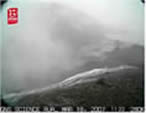PROJECTS
TTAC reports are usually confidential to clients, but some are published. The examples below should give you a flavour of my/our work.
REVIEW OF AUSTRALIAN RAIL INDUSTRY STANDARDS BODY
The Australian Rail Industry Safety & Standards Board (RISSB) faces a challenging task to harmonise standards across the very disparate railways of the Australian continent. I was commissioned by the Commonwealth, State and Territory Governments to review RISSB and the memorandum of understanding under which it operates with those governments. The report of the review is published here.
A RISK FRAMEWORK FOR EARTHQUAKE-PRONE BUILDINGS POLICY
The Canterbury earthquakes of 2010/11 caused massive damage to older buildings that predated modern seismic criteria. The New Zealand government Department for Building and Housing carried out a major review of policy for such earthquake-prone buildings. To inform that review they commissioned TTAC Ltd, in collaboration with GNS Science, to provide a report placing earthquake risks in perspective, and examining the merits of tightening the definition of "earthquake prone buildings" in comparison with other risk reduction strategies. My report was published as part of the consultation on policy changes.
RISK ASSESSMENT FOR SLOPE COLLAPSE
Much of the international focus of attention following the earthquakes in Christchurch New Zealand in 2010/11 was on the death and destruction that occurred in and around the city centre. In the attractive Port Hills suburbs south of the city, over 100 homes were smashed by rockfalls and hundreds more that suffered "near misses" were evacuated. Thankfully, few residents were hurt as most were out at work, but this left a difficult dilemma for the City Council in deciding which homes were safe to re-occupy. GNS Science, the pre-eminent NZ geological science organisation, was contracted to provide risk assessments to support these decisions. As peer reviewer I worked closely with GNS to develop and apply the risk assessment methods, and developed advice for the Council on the principles and criteria they should use in evaluating such risks. The resulting suite of reports is published here.
DOMESTIC LPG Pipework
A tragic explosion of liquefied petroleum gas at a factory in Scotland in 2004 killed 8 people and injured several others. The Health and Safety Executive took prompt action to address the underlying causes at factories and other commercial premises, and in 2009 commissioned TTAC Ltd to carry out an assessment of the risks at domestic premises to inform policy in this area. The assessment involved assembling a wide variety of evidence from HSE and gas supplier databases, workshops with engineers, and models of gas migration through soil and into buildings (all within a very demanding timescale),, and is published here.
LAHAR on MOUNT RUAPEHU
The eruptions of Mt Ruapehu in 1995 and 1996 left a thick "dam" of loose ash and other material around the rim of the crater. At the time Tony was living and working in New Zealand in 2002, the level of water in the crater lake was rising and there was much debate over what would happen when the water reached this dam. The general consensus was that the lake level would rise up the dam, which would at some point fail fairly suddenly causing a large lahar (flow of water and entrained soil/rock/mud) down the mountain. The previous major lahar on Mt Ruapehu in 1953 had swept away a railway bridge causing the deaths of 151 people. The NZ Ministry of Civil Defence Emergency Management commissioned a Residual Risk Assessment for the lahar, which provided a foundation for response planning. You can access my report here, see the lahar as it eventually happened (safely) in 2007 on YouTube here, and read more background to the management of lahar risk on an active volcano on the NZ Department of Conservation web site here.
DEALING WITH DIFFERENCES OF EXPERT OPINION
People who make important decisions often rely on others for specialist advice on topics where they themselves are not expert. In 2001 the Health & Safety Executive (HSE) commissioned me to examine how other organisations deal with differences of expert opinion, and to identify examples of good practice. Participants included BAA, the British Medical Association, the Food Standards Agency and the trade union Prospect. The TTAC report is published here.
OBSTRUCTION OF THE RAILWAY BY ROAD VEHICLES
Following the rail accident at Great Heck in 2001 where a Land Rover ran off the motorway and blocked the railway causing a fatal derailment, the Health & Safety Commission set up a joint road-rail working group to recommend appropriate improvement actions. I collated the evidence collected by the group and drafted the report, which is available here.
TRAIN PROTECTION AND WARNING SYSTEM (TPWS)
Network Rail incorporated independent assessments by TTAC Ltd of the risk from trains overspeeding, and of the effectiveness of TPWS in mitigating that risk, into their applications for exemptions from the regulations requiring TPWS to be fitted at certain speed restrictions on the railway. You can read the Network Rail applications incorporating my analysis in the Office of Rail Regulation archive here (diverging junction PSRs with approach control signalling) and here (temporary speed restrictions).
ETHICAL BASIS of RAIL SAFETY DECISIONS
Pitchill Consulting and TTAC Ltd were commissioned by the Rail Safety & Standards Board to explore ethical considerations and their relevance for decisions on safety and safety investment for Britain’s railways. This involved interviewing some very interesting people including broadcasters, journalists, medical ethicists, MPs and senior clergymen. The report is published here.

